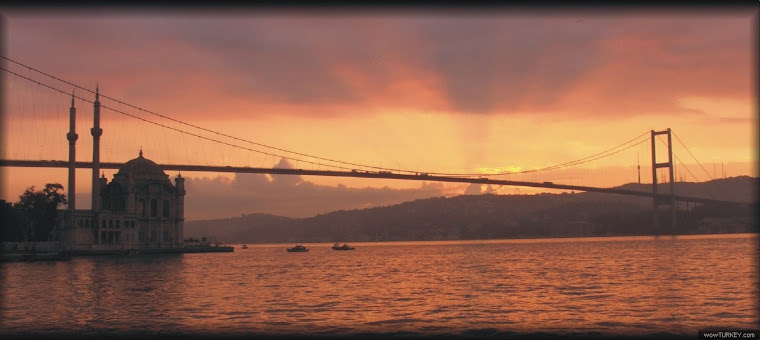 The flag of Turkey consists of a white crescent moon and a star on a red background. The flag is called ''Ay-Yıldız'' (literally, moon star) or ''Al Sancak'' (red banner) in Turkish. The flag has a complex origin since it is an ancient design, and is practically identical to the last flag of the Ottoman Empire which was adopted in 1844, as part of the Tanzimat reforms. The geometric proportions of the flag were legally standardized with the Turkish Flag Law in 1936.
The flag of Turkey consists of a white crescent moon and a star on a red background. The flag is called ''Ay-Yıldız'' (literally, moon star) or ''Al Sancak'' (red banner) in Turkish. The flag has a complex origin since it is an ancient design, and is practically identical to the last flag of the Ottoman Empire which was adopted in 1844, as part of the Tanzimat reforms. The geometric proportions of the flag were legally standardized with the Turkish Flag Law in 1936.The shade of red used in the flag is approximated by Pantone 186, or RGB (227, 10, 23).
-HISTORY OF TURKISH FLAG
Main article: Ottoman Flag
The crescent and star, while generally regarded as Islamic symbols today, have long been used in Asia Minor and by the ancient Turks, earlier than the advent of Islam. According to one theory, the figure of crescent has its roots in tamghas, i.e. markings used as livestock brand or stamp, used by nomadic Turkic clans of Central Asia.
The current design of the Turkish flag is practically identical to the last Ottoman flag, which had acquired its final form in 1844, with the Tanzimat reforms. It is known that the Ottomans used red flags of triangular shape at least since 1383, which came to be rectangular over the course of history.
Ottomans used several different designs, most of them featuring one or more crescents, for different purposes, such as the flag with green background signifying the Caliphate. During the late imperial period, the distinctive use of the color red for secular and green for religious institutions became an established practice. In 1844, the eight-pointed star was replaced with a five-pointed star and the flag reached the form of the present-day Turkish flag.
-LEGENDS ABOUT TURKISH FLAG
One of the most popular legends regarding the Flag of Turkey is that, in a pool of blood of Turkish warriors, there was a reflection of the crescent moon and a star. Three theories have been put forward regarding the possible location and context of this event, which include:
In the year 1071, after the Battle of Manzikert and the defeat of the Byzantine army, the Seljuk Sultan Alp Arslan was roaming the battlefield, where he saw the reflection of the crescent moon and a star on a pool of blood of Turkish warriors. After he saw this image, he decided that this would be the flag representing the Seljuk Turks. However, the Anatolian (Rum) Seljuk flag is known to have a white double-headed eagle figure (similar to the Byzantine double-headed eagle), which holds a bow and arrow, on a light blue background; therefore this theory is not likely to be true.
After the Battle of Kosovo on 28 July 1389, the Ottoman Sultan Murad I. was assassinated, and on that night there was a unique moment of Jupiter and the Moon next to each other. If one considers this sight on a pool of blood, the current structure of the Turkish flag can be seen easily.
Mustafa Kemal Atatürk, the founder of the modern Republic of Turkey, walking on a battlefield one night after the Turkish victory in the Battle of Sakarya during the Turkish War of Independence, saw the reflection of the star and crescent formation on a large pool of blood near the Sakarya River. This is obviously not true, due to the fact that the present-day Turkish flag is in continuous use since its adoption as the Ottoman national flag in 1844, which can be documented with thousands of photographs and other sources.
Other theories include:
In a dream of Osman I, the first Ottoman Sultan, a crescent and star appeared from his chest and expanded, presaging the dynasty's seizure of Constantinople.
A crescent and star were spotted on the night of the fall of Constantinople to Mehmed II in 1453.
The smallest flag of the World (700 nanometers wide and about 2 nanometers high), produced at the Bilkent University Nanophysics Department.
-LEGAL BASIS
The fundamentals of the Turkish flag were laid down by the Turkish Flag Law (Law No. 2994) on May 29, 1936. The Turkish Flag Regulation Law (Law No. 2/7175) dated July 28, 1937, and the Supplementary Regulation (Law No. 11604/2) dated July 29, 1939, were enacted to describe how the definite geometric proportions of the flag should be established. The Turkish Flag Law (Law No. 2893) dated September 22, 1983, and published in the Official Gazette on September 24, 1983, was promulgated six months after its publication. According to Article 9 of Law No. 2893, a statute including the fundamentals of the implementation was also published.
-CONSTRUCTION

Let G be the width of the flag.
Letter
Measure
Length
A:
Distance between the centre of the outer crescent and the seam of the white band
1/2 G
B:
Diameter of the outer circle of the crescent
1/2 G
C:
Distance between the centres of the inner and outer circles of the crescent
1/16 G
D:
Diameter of the inner circle of the crescent
0.4 G
E:
Distance between the inner circle of the crescent and the circle around the star
1/3 G
F:
Diameter of the circle around the star
1/4 G
L:
Length
1 ½ G
M:
Width of the seam band
1/30 G



No comments:
Post a Comment